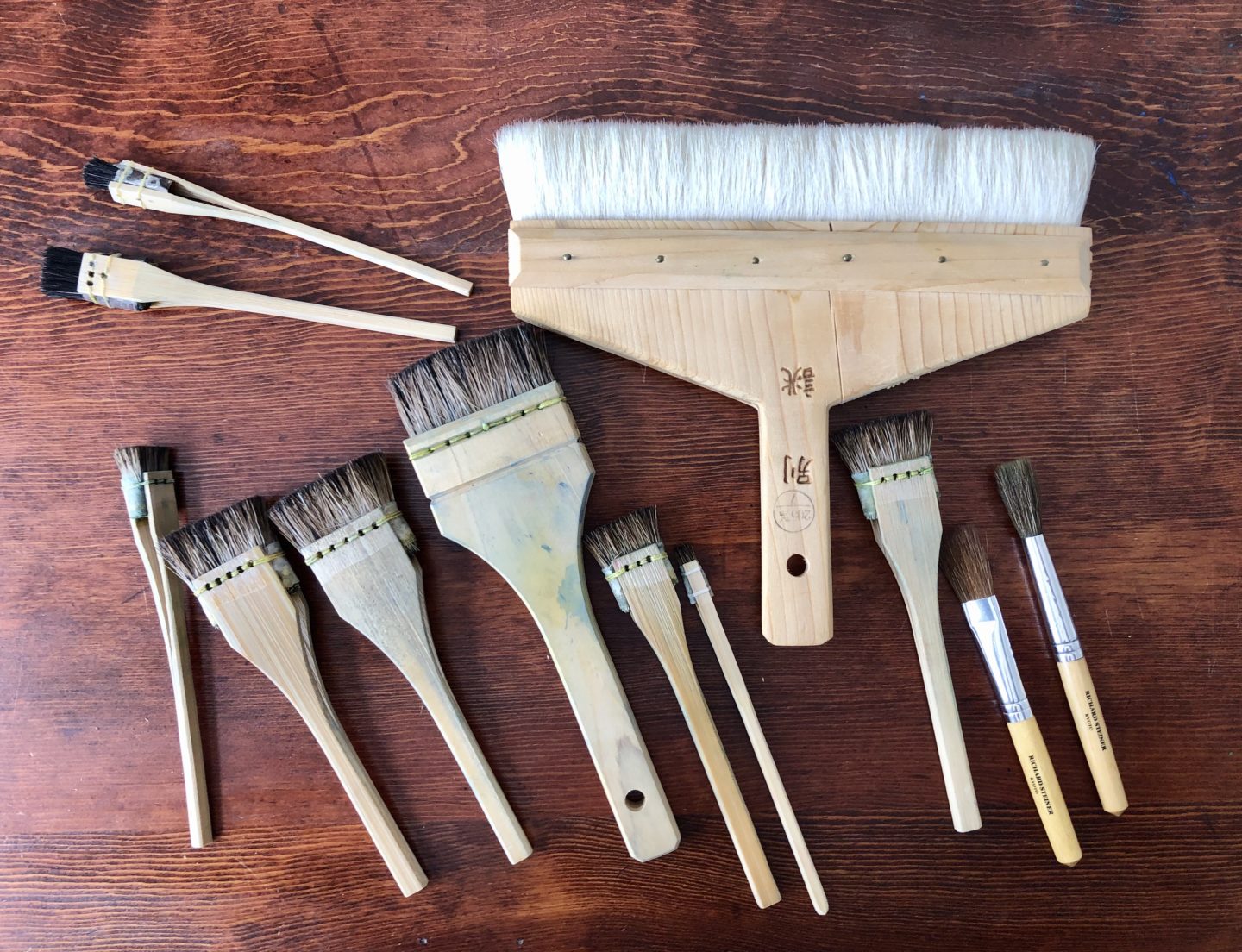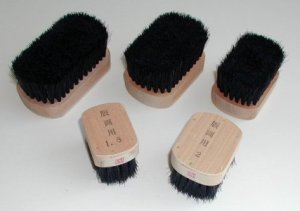
In my post on materials, I touched on the topic of brushes. There are a variety of brushes used in Japanese woodblock printmaking. Each has a specific purpose. There are brushes for applying water, dosa (sizing), pigment and brushes for moving the pigment over the block. This post is about the latter… printing brushes.
Surikomi Bake
Surikomi Bake, also known as a stenciling brush, works well for mokuhanga. It’s been my brush of choice for two reasons… I started my practice with them, and they are affordable. I think these are great brushes for the beginner, and if you’re just starting your practice this is where you’ll want to spend your money.
Surikomi bake brushes consist of hog and deer hair. This combination of hair makes for a stiff brush that doesn’t easily leave lines of paint. A quality I appreciate because the last thing I want to deal with are unwanted lines of pigment as I print! Unfortunately they don’t last as long as the brushes I’ve covered below. Repeated washing softens the strings that hold the bristles in place, and as the they age you’ll begin to see hairs fall out. It’s an annoyance. Still, even though I’m replacing a few with maru bake, I don’t think I’ll ever eliminate them from my collection.
Hanga Bake
Hanga bake brushes are made from hog hair and are very dense. They easily withstand the brisk, forceful movement of inking blocks. They are considered a classic and have been used since the days of the ukiyo-e prints. The handles are made from bamboo and are hand carved with the bristles hand sewn into the center. Recently, I purchased two of these brushes to broaden my experience and I’m very happy with them. They hold a lot of pigment and spread it easily and evenly.

Image taken from McClain’s Printmaking Supplies
Maru Bake
Professional printers use a wide range of brushes, but this brush is always in their toolbox and the brush of choice. Maru means ’round.’ They are made from black horse tail hair, and like the others, they are completely hand made. They are expensive, but will last years with good care. Artists will often have a complete set of brushes and assign a basic color to each. That way any unwanted pigment left behind won’t impact the printing process.
However there is a drawback, maru bake brushes need to be treated before use (unless you’re willing to spend the extra money to have it done for you). The bristles on these brushes must be shaped, split and softened. Traditionally, shark skin is used, but you can purchase a silicon carbide sanding sheet instead and save a shark. The process starts by first burning the ends of the bristles, then dipping the brush in water. At that point you’re ready for the vigorous job of rubbing the bristles back and forth over the sanding sheet. It must be done in several directions and repeated until the bristles soften, which may take up to a half an hour for a small brush!
Now, after reading that, if you’re still interested in learning more, you’ll find complete instructions on McClain’s website. They’ve done a nice job of describing the process in detail.
So, that’s it for now. I hope this post has helped shed light on the printing brushes used for Japanese woodblock printmaking, and I encourage anyone interested in this art form to find a class and give it a try.
Best always